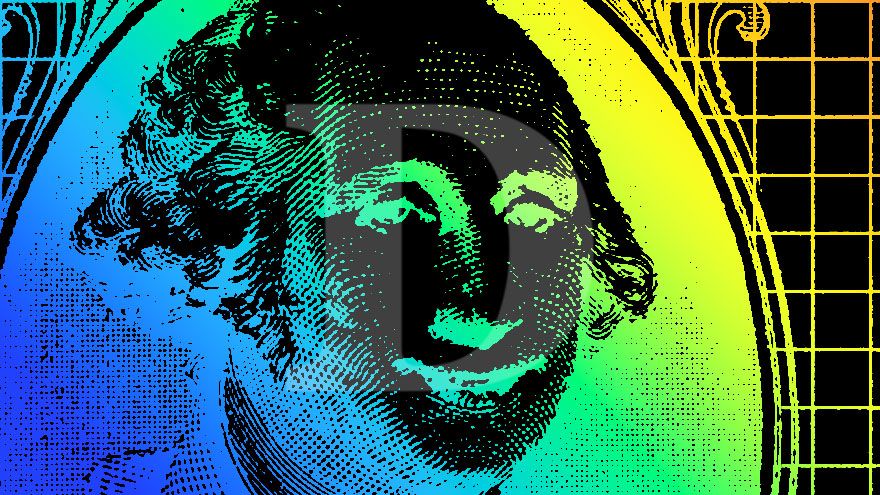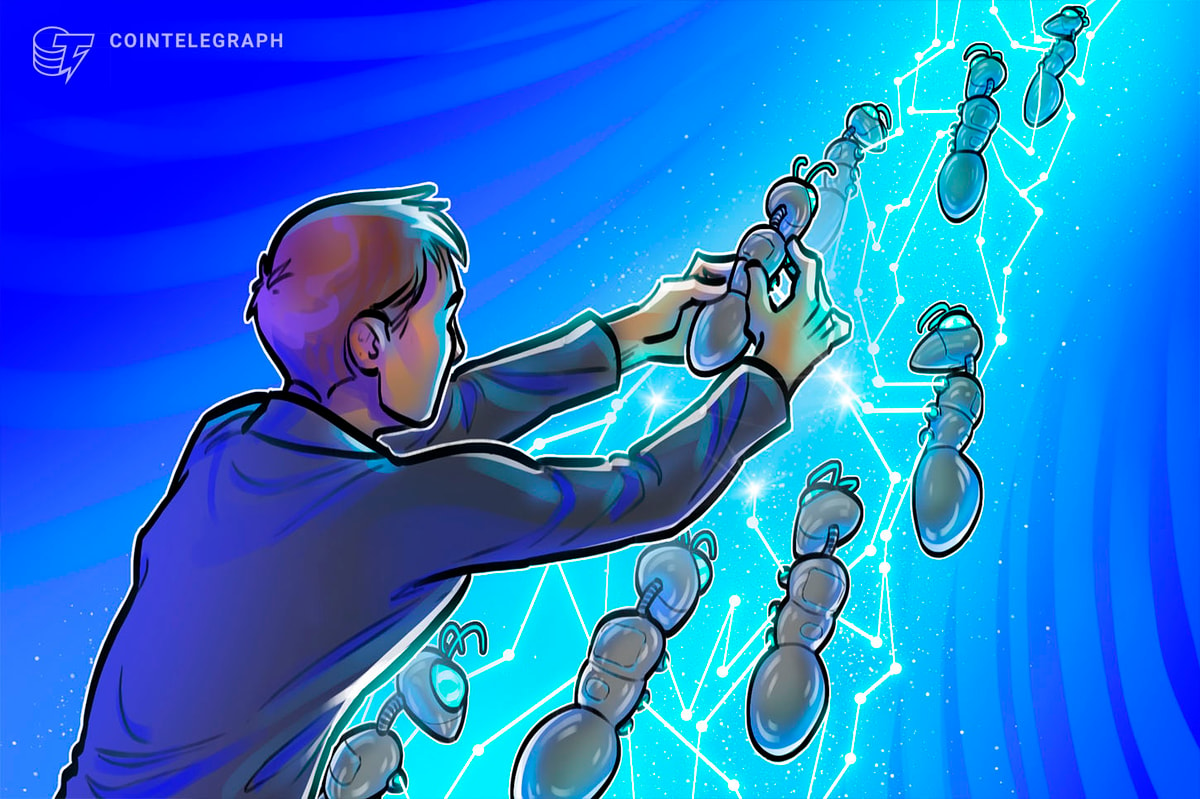The novel price-pegging mechanism underpinning crvUSD, the month-old stablecoin from Curve Finance, is proving highly effective so far.
On Monday, Curve shared data showing that its stablecoin has traded within a less than 0.5% price range since launching.
Looking at the performance of rival decentralized stablecoins during their first month for comparison, DAI fluctuated within an 8% range, FRAX oscillated by 10%, and sUSD bounced around by 2%, according to CoinGecko.
Users have already minted 4.7M crvUSD, according to Dune Analytics. Based on data from CoinGecko, a market cap of $4.7M crvUSD would rank the project as the 42nd-largest stablecoin protocol.
Curve is the fourth-largest DeFi protocol with a total value locked of $4.3B across 12 chains, according to DeFi Llama. Its native CRV token is down 3% in the past week.
Bear Market Disrupts Stablecoin Sector
crvUSD’s growth comes as many developers see opportunities in the stablecoin sector.
Centralized stablecoins were disrupted by regulations and exposure to the legacy financial sector in recent months. In February, New York financial regulators ordered Paxos to stop issuing new BUSD tokens. One month later, USDC, the second-largest stablecoin, briefly depegged as holders feared the exposure of USDC’s issuer to failed U.S. banks could pose a threat to its collateral reserves.
Confidence in incumbent decentralized stablecoins took a hit after the collapse of the Terra network and its algorithmic UST stable token last year. Then, MakerDAO’s DAI stablecoin lost its peg alongside USDC in March due to more than 40% of its collateral assets comprising USDC at the time. Further, Maker’s founder recently expressed an interest in freely floating DAI against the dollar in the future.
The turmoil in the stablecoin markets created strong demand for stablecoins offering resilience to price volatility and regulatory interference, such as decentralized and overcollateralized tokens.
Peg Keepers
Curve deployed its stablecoin on the Ethereum mainnet nearly four weeks ago, inspiring degens to ape $2M into the protocol despite it lacking a user interface (UI) at the time. Curve launched a UI for crvUSD on May 17.
crvUSD currently can only be minted against sfrxETH, the liquid staking derivative (LSD) from Frax Finance, and is backed by $6.4M worth of sfrxETH. Curve said it will onboard additional LSD tokens, and is consulting with its community on whether it should explore support for ETH and WBTC.
With users continuing to earn staking rewards on their collateral when minting crvUSD, users are reporting earnings of close to 3% after paying interest on the stablecoins.
crvUSD uses “stability pools” and PegKeepers” to maintain its price at $1. Stability Pools are liquidity pools that pair crvUSD with other stablecoins — USDC, USDT, USDP, and TUSD. PegKeepers are smart contracts assigned to a particular Stability Pool which can mint a limited number of crvUSD to push the token’s price towards $1.
When the price of crvUSD exceeds $1 in a specific Stability Pool, the PegKeeper can mint crvUSD and deposit it to the pool to place downward pressure on its price. Transversely, PegKeepers can remove and burn their crvUSD liquidity when the token’s price is below $1, reducing supply and theoretically pushing prices up.
Steep interest rates are also imposed on crvUSD borrowers when its price slides below $1 to incentivize users to purchase crvUSD to pay down their debts. Rates also fall when crvUSD is above $1 to encourage loan generation.
Curve said just 14% of crvUSD’s supply is backed by PegKeepers, while its Stability Pools hold 2.5M crvUSD each.
LLAMA Liquidations
crvUSD introduced a unique liquidation mechanism called the lending-liquidating AMM algorithm, or LLAMMA, in a bid to reduce the effects of liquidations on borrowers.
When the value of the collateral assets backing a user’s crvUSD approaches its liquidation price, the protocol will gradually convert the collateral into stablecoins rather than unwind the entire position in a single trade. Then, as the price of collateral rises, Curve converts the stablecoin collateral back to volatile assets.
However, this process comes at a small cost to users’ collateral.
Curve currently receives price data from Chainlink’s oracles, but Curve has hinted it will provide the infrastructure itself in the future.
Read More: thedefiant.io









 Bitcoin
Bitcoin  Ethereum
Ethereum  Tether
Tether  XRP
XRP  Solana
Solana  USDC
USDC  Dogecoin
Dogecoin  TRON
TRON  Cardano
Cardano  Lido Staked Ether
Lido Staked Ether  Wrapped Bitcoin
Wrapped Bitcoin  Hyperliquid
Hyperliquid  Sui
Sui  Wrapped stETH
Wrapped stETH  Chainlink
Chainlink  Avalanche
Avalanche  Stellar
Stellar  LEO Token
LEO Token  Bitcoin Cash
Bitcoin Cash  Toncoin
Toncoin  Shiba Inu
Shiba Inu  Hedera
Hedera  WETH
WETH  USDS
USDS  Litecoin
Litecoin  Wrapped eETH
Wrapped eETH  Polkadot
Polkadot  Monero
Monero  Binance Bridged USDT (BNB Smart Chain)
Binance Bridged USDT (BNB Smart Chain)  Ethena USDe
Ethena USDe  Bitget Token
Bitget Token  Pepe
Pepe  Pi Network
Pi Network  Coinbase Wrapped BTC
Coinbase Wrapped BTC  WhiteBIT Coin
WhiteBIT Coin  Aave
Aave  Uniswap
Uniswap  Dai
Dai  Bittensor
Bittensor  Ethena Staked USDe
Ethena Staked USDe  Aptos
Aptos  NEAR Protocol
NEAR Protocol  Cronos
Cronos  OKB
OKB  Jito Staked SOL
Jito Staked SOL  BlackRock USD Institutional Digital Liquidity Fund
BlackRock USD Institutional Digital Liquidity Fund  Internet Computer
Internet Computer  Ondo
Ondo  Ethereum Classic
Ethereum Classic